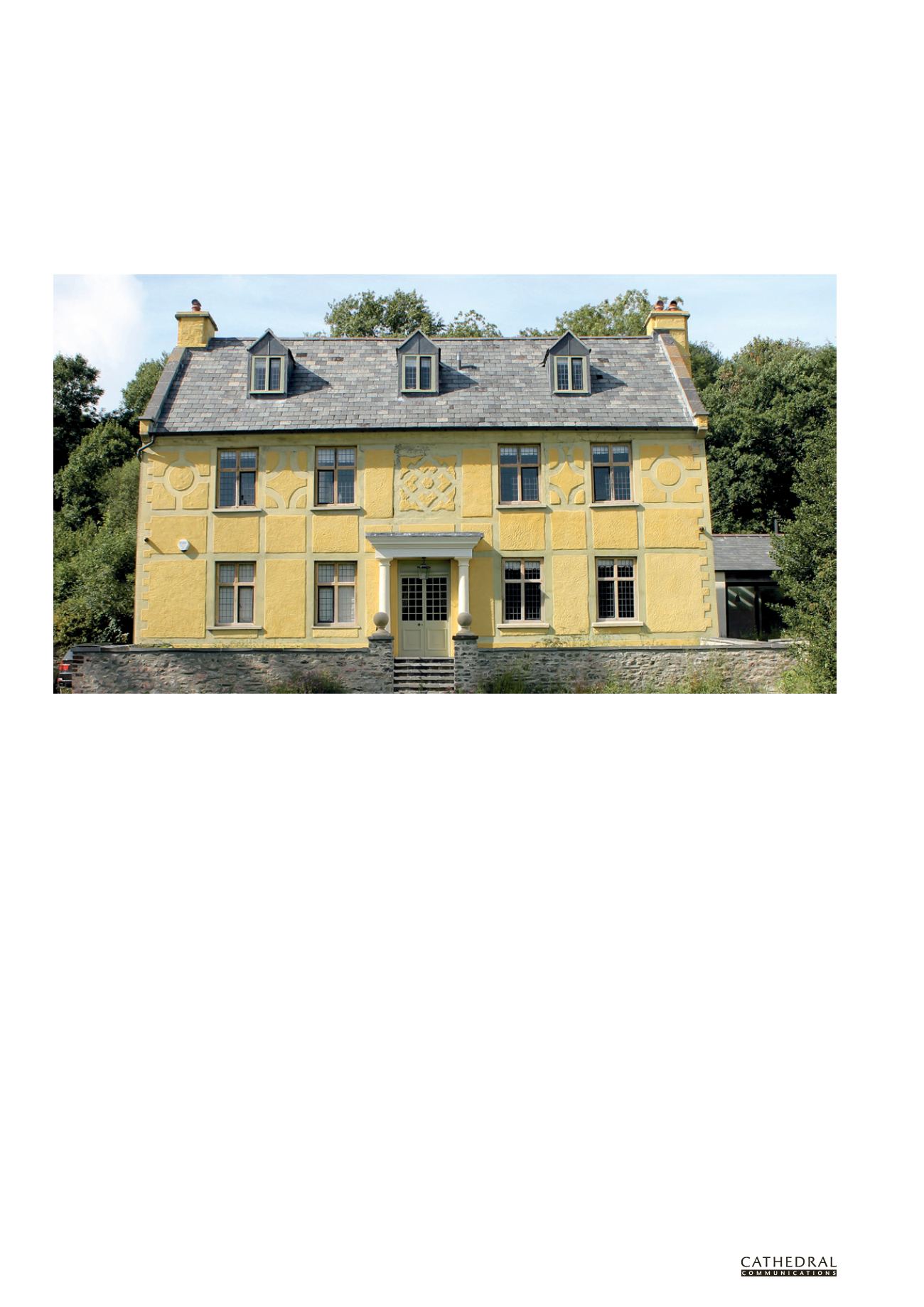
2 8
T H E B U I L D I N G C O N S E R VAT I O N D I R E C T O R Y 2 0 1 4
T W E N T Y F I R S T E D I T I O N
1
PROFESSIONAL SERVICES
SHADES OF GREY
MICHAEL DAVIES
Dan walked across the room and sat down.
They exchanged pleasantries but soon got
down to business. He bit his lip nervously
and loosened his tie as Miss Jones sighed and
touched her face thoughtfully. ‘Is this what
she expected’, he wondered, ‘or will she be
disappointed?’ As she looked up their eyes met
and she smiled and said: ‘The cornice is a little
deep for an upper room but I’m happy with
the general principle.’ (Seriously, what did you
expect? This is a professional publication.)
M
ANY OF US
have been in this
scenario, on one side of the table
or the other – an architect and a
conservation officer trying to agree how
alterations and restoration might be achieved.
A meeting of minds perhaps, but how often do
they really meet? As a practising conservation
architect for over 25 years I have often been
there, although these days I don’t think I bite
my lip so much. The whole system appears to
be built upon various ‘shades of grey’, but it
often goes deeper than that.
The design process can be very difficult –
an architect might spend many weeks trying
to develop a scheme under the burden of
legislation and policy while also negotiating
the very challenging philosophies that
underpin conservation thinking. Add to that
the expectations of a client who’s unfamiliar
with the principles and complexities of
heritage protection, and a less than purist
solution sometimes emerges.
While shades of grey in legislation and
policy are not welcomed by people looking for
consistency and certainty in decision making,
they do allow for manoeuvre and negotiation
to achieve a pragmatic solution, one that
has a bit of give and take, or compromise.
In my experience, conservation has always
been about compromise and negotiating an
agreeable solution between the architect (or
surveyor/engineer), the local authority and
specialist bodies such as English Heritage in
the interests of the historic building. This is
best achieved when all parties have a high
degree of expertise and experience.
It is also true that conservation thinking
has moved on in the last 20 years. During
this time there has been a greater acceptance
of change in the historic environment,
allowing buildings to evolve and adapt to
the ever-changing demands being placed
upon them. Patterns of building use have
changed leaving many historical buildings
redundant, from churches and chapels no
longer needed for worship, to the workshops
and warehouses of abandoned industries.
Now high street commercial properties
are also under threat. This transition has
generally been embraced under the umbrella
of ‘the management of change’, change
that is delicate and requires a particular
skill, and which ultimately provides the
sustainable adaptation of our historic assets.
WHAT CONSTITUTES CHANGE?
Section 7 of the Planning (Listed Buildings and
Conservation Areas) Act 1990 says that listed
building consent (LBC) is required for ‘any
works for the demolition of a listed building or
for its alteration or extension in any manner
which would affect its character as a building
of special architectural or historic interest.’
Paul Drury’s 2003 report, Streamlining
Listed Building Consent, examined the
definition of the terms used in section 7
of the Act. The report suggested that what
constitutes an ‘effect’ on the character of a
listed building is at the heart of the issue of
what needs consent. Consent is required for
works that would affect the character of the
building as one of ‘special architectural or
historic interest’. Thus what is being protected
is that which makes the building of special
interest, and which justifies its inclusion on the
list, not any and every aspect of its interest or
significance to anyone.
This suggests that a great deal more
restoration and alteration work could be done
without the need for consent. However, it
would be a brave applicant – and conservation
officer – who would adopt/allow this approach
because it is fraught with difficulties. Take
simple repointing for example. Allowing a


